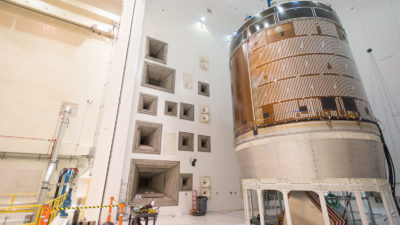Building a structure for urban air mobility
By David Thipphavong|December 2018
The Air Transportation Systems Technical Committee fosters improvements to transport systems and studies the impacts of new aerospace technologies.
According to the International Air Transport Association, global airline industry profits are projected to dip from $38 billion in 2017 to $33.8 billion in 2018 because of a projected 25.9 percent increase in fuel prices and a 2.2 percent increase in labor rates this year. However, this still represents a robust return on invested capital of 8.5 percent. In North America, a net post-tax profit of $15 billion is expected in 2018, with a net post-tax profit margin of almost 6 percent. This strong economic performance is attributed to the consolidation of commercial airlines, which has helped maintain high passenger and cargo loads.
Beyond traditional aviation, urban air mobility, or UAM, became a significant area of interest in industry, academia and government this year. In September, NASA announced plans to host a series of UAM Grand Challenges in which the UAM community demonstrates designs that address foundational UAM safety and integration barriers, with the first event expected in late 2020.
UAM includes aircraft with pilots onboard and UAS, short for unmanned aircraft systems, conducting scheduled and/or on-demand operations between dedicated and/or ad hoc takeoff and landing areas along fixed or temporary routes in metropolitan areas that could include airspace that conventional aircraft use. Among UAM under development are hybrid electric or fully electric vehicles that could conduct a wide range of missions, including transporting people and goods and assessing ground traffic. UAM stakeholders are working together to build the required structure that includes vehicle manufacturing, battery development, vertiport design and construction, and air traffic management. The UAM community will need to work together with the broader aviation community to demonstrate that UAM aircraft can be operated safely with other aircraft and people and property on the ground.
NASA made a significant advancement toward routine operations of unmanned aircraft in the National Airspace System when it flew an Ikhana Predator B aircraft without a manned safety chase aircraft in high-altitude airspace used by commercial and private aircraft. NASA worked closely with the FAA to conduct this historic flight. The Ikhana aircraft flew in accordance with FAA standards for large UAS using equipment developed by industry partners General Atomics and Honeywell.
In addition to large UAS, a significant step has been taken toward the routine operation of small UAS. The national beta test of the Low Altitude Authorization and Notification Capability, or LAANC, was rolled out in six waves between April and September at nearly 300 air traffic facilities covering approximately 500 airports. LAANC is the first initiative of the FAA UAS Data Exchange Program for facilitating the sharing of airspace data between the government and small UAS operators. LAANC automates the application and approval process for the FAA to authorize small UAS operators to fly under 400 feet in controlled airspace around airports. Requests submitted by operators are checked against airspace data (e.g., temporary flight restrictions) in the FAA UAS Data Exchange. Compared with manual authorizations that could take weeks, LAANC enables small UAS operators to receive authorization in near-real time.
Photo: NASA’s Ikhana Predator B unmanned aircraft, in a test flight, flew without a manned safety chase aircraft in high-altitude public airspace. Credit: NASA



































